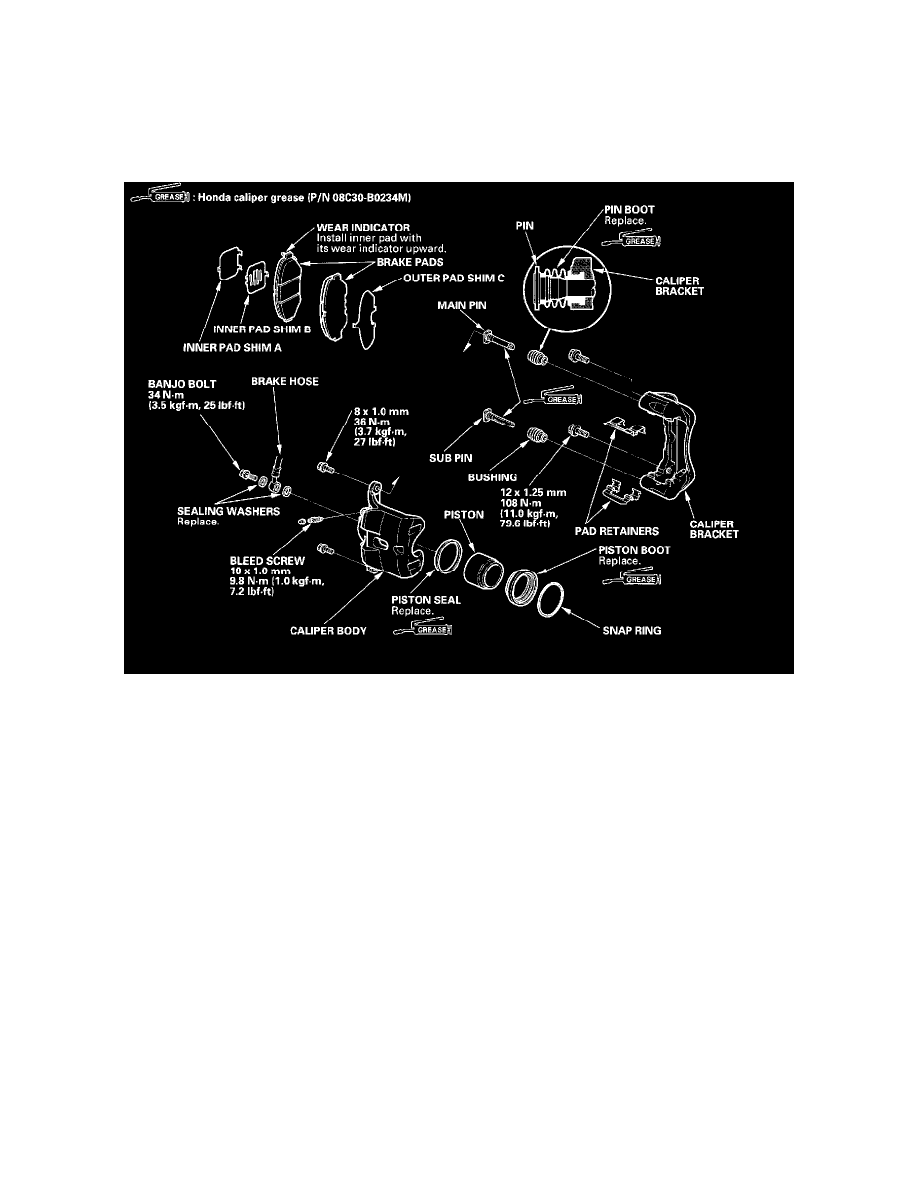Pilot V6-3.5L (2004)

Brake Caliper: Service and Repair
Front
Overhaul
CAUTION: Frequent inhalation of brake pad dust, regardless of material composition, could be hazardous to your health.
^
Avoid breathing dust particles.
^
Never use an air hose or brush to clean brake assemblies. Use an OSHA-approved vacuum cleaner.
Remove, disassemble, inspect, reassemble, and install the caliper, and note these items:
^
Do not spill brake fluid on the vehicle; it may damage the paint; if brake fluid gets on the paint, wash it off immediately with water.
^
To prevent dripping brake fluid, cover disconnected hose joints with rags or shop towels.
^
Clean all parts in brake fluid and air dry; blow out all passages with compressed air.
^
Before reassembling, check that all parts are free of dirt and other foreign particles.
^
Replace parts with new ones as specified in the illustration.
^
Make sure no dirt or other foreign matter gets in the brake fluid.
^
Make sure no grease or oil gets on the brake discs or pads.
^
When reusing pads, always reinstall them in their original positions to prevent loss of braking efficiency.
^
Do not reuse drained brake fluid. Use only clean Honda DOT 3 Brake Fluid. Non-Honda brake fluid can cause corrosion and shorten the life of
the system.
^
Coat the piston, piston seal groove, and caliper bore with clean brake fluid.
^
Replace all rubber parts with new ones.
^
After installing the caliper, check the brake hose and line for leaks, interference, and twisting.
